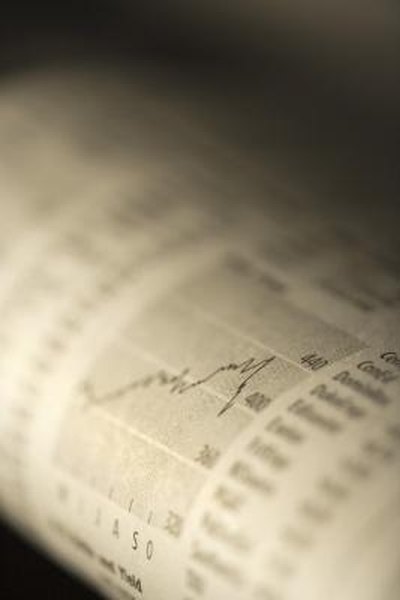How to Read Futures Charts
Knowing how to read a futures chart can help you make better investment decisions.
Thinkstock/Comstock/Getty Images
Futures charts hold a wealth of information that investors can use to improve their trading. Prices rise and fall in response to changing supply and demand, and understanding how chart indicators respond to these price movements can mean the difference between a profit and a loss. With a little bit of practice, investors can read a futures chart and use the information to help make informed trading decisions.
Go to a free online commodity chart provider and open a chart. Every chart, whether it’s depicting a stock, bond, option or commodity, displays the price and date on the chart axis. Price is found in the right or left vertical margin and date information runs horizontal along the bottom of the chart. The price and date information can be changed by selecting a different time period, for example, moving from a 5-minute chart to a daily chart.
Step 2Select price bars to display price information. Each bar shows the opening price, low price, high price and closing price for a trading session. The bar is one solid vertical line with one horizontal line sticking out from each side. The left horizontal line identifies the opening price, the bottom of the bar the low price, the top of the bar the high price and the right horizontal line the session’s high. A succession of higher highs indicates an upward trend; a series of lower lows indicate a downward trend.
Step 3Use trend lines to predict where the commodity might be heading. Look for prices that are making higher highs or lower lows. If you can draw a straight line that touches at least three high points, prices are in an uptrend. If you can draw a straight line that touches at least three low points, prices are in a down trend.
Step 4Recognize the basic M and W price pattern formations. An M is created by two high points at approximately the same price level with the middle point lower than the two high points. This pattern generally indicates a down trend after the price breaks below the middle low point. The W is formed the opposite way: two low points at approximately the same price level with the middle point higher than the two low points. It can signal an upturn once the price breaks above the high point. These patterns can help determine a trade’s entry or exit points.
References
Tips
- Use different time frames to see if the indicators are in agreement. The more they agree, the more reliable the trend.
- A commodity is the physical asset, such as gold, oil and wheat. A future is a derivative used to trade the commodity, such as an option.
Warnings
- Indicators show where the prices have been but not where they are going. Don’t rely solely on indicators to make trading decisions.
Writer Bio
Based in St. Petersburg, Fla., Karen Rogers covers the financial markets for several online publications. She received a bachelor's degree in business administration from the University of South Florida.

